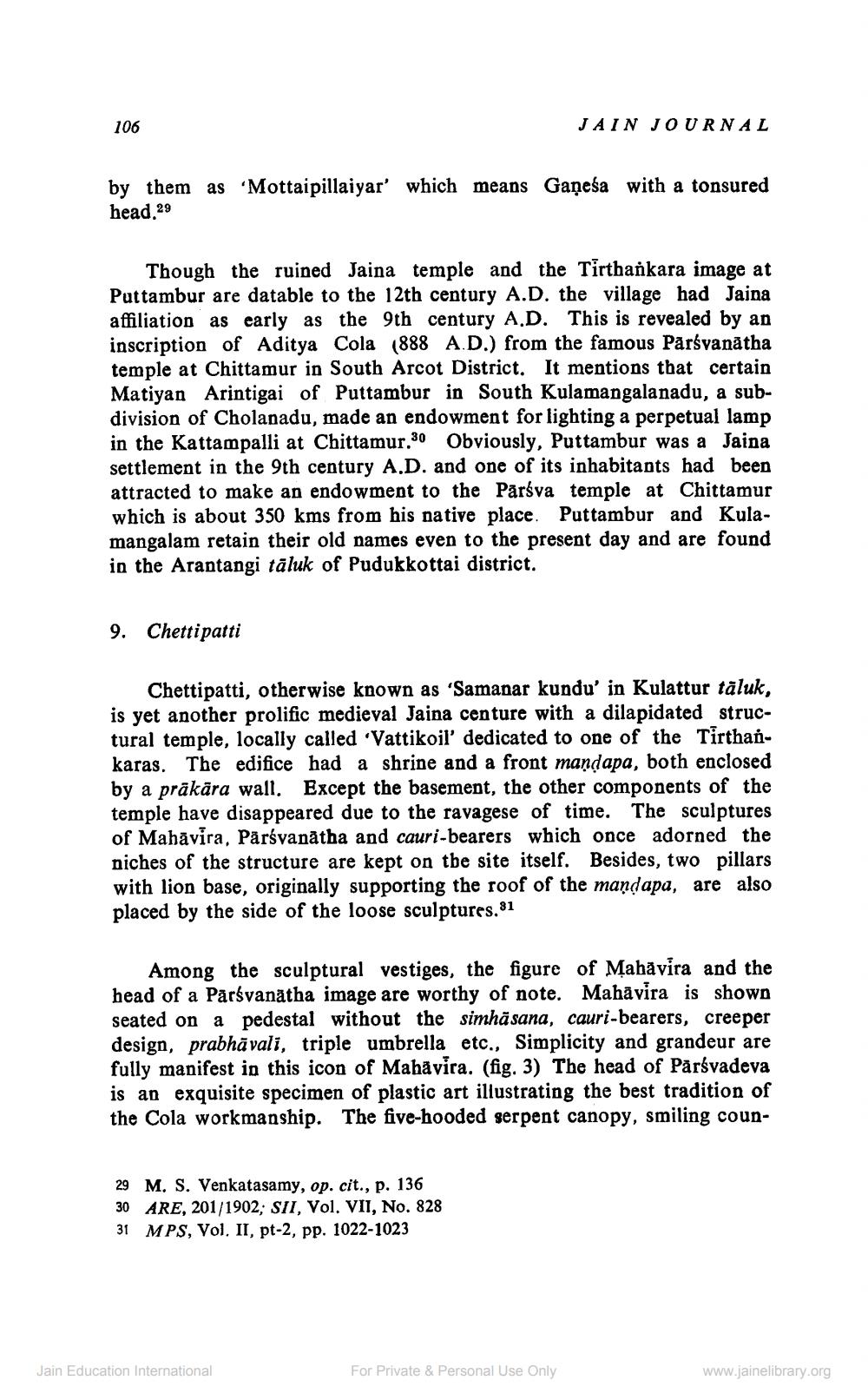________________
106
JAIN JOURNAL
by them as 'Mottaipillaiyar' which means Gaņeśa with a tonsured head.29
Though the ruined Jaina temple and the Tirthařkara image at Puttambur are datable to the 12th century A.D. the village had Jaina affiliation as early as the 9th century A.D. This is revealed by an inscription of Aditya Cola (888 A.D.) from the famous Parsvanātha temple at Chittamur in South Arcot District. It mentions that certain Matiyan Arintigai of Puttambur in South Kulamangalanadu, a subdivision of Cholanadu, made an endowment for lighting a perpetual lamp in the Kattampalli at Chittamur.30 Obviously, Puttambur was a Jaina settlement in the 9th century A.D. and one of its inhabitants had been attracted to make an endowment to the Parsva temple at Chittamur which is about 350 kms from his native place. Puttambur and Kulamangalam retain their old names even to the present day and are found in the Arantangi taluk of Pudukkottai district.
9. Chettipatti
Chettipatti, otherwise known as 'Samanar kundu' in Kulattur taluk, is yet another prolific medieval Jaina centure with a dilapidated structural temple, locally called 'Vattikoil' dedicated to one of the Tirthankaras. The edifice had a shrine and a front mandapa, both enclosed by a prākāra wall. Except the basement, the other components of the temple have disappeared due to the ravagese of time. The sculptures of Mahāvira, Pärsvanātha and cauri-bearers which once adorned the niches of the structure are kept on the site itself. Besides, two pillars with lion base, originally supporting the roof of the mandapa, are also placed by the side of the loose sculptures.81
Among the sculptural vestiges, the figure of Mabăvira and the head of a Parsvanatha image are worthy of note. Mahavira is shown seated on a pedestal without the simhāsana, cauri-bearers, creeper design, prabhāvali, triple umbrella etc., Simplicity and grandeur are fully manifest in this icon of Mahavira. (fig. 3) The head of Pārsvadeva is an exquisite specimen of plastic art illustrating the best tradition of the Cola workmanship. The five-hooded serpent canopy, smiling coun
29 M. S. Venkatasamy, op. cit., p. 136 30 ARE, 201/1902; SII, Vol. VII, No. 828 31 MPS, Vol. II, pt-2, pp. 1022-1023
Jain Education International
For Private & Personal Use Only
www.jainelibrary.org




